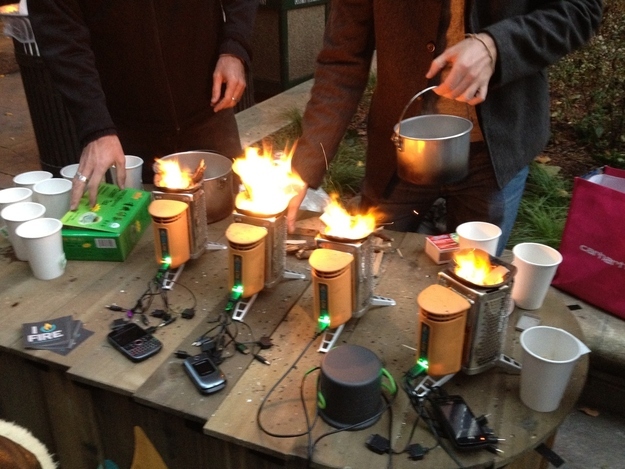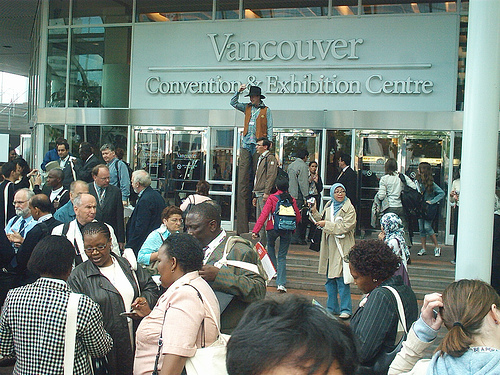A ‘New York’ Paper Takes a Look in the Mirror
Tag Archives: New York City
Do Mayors Matter https newrepublic com article 84045…
Link
Do Mayors Matter?
https://newrepublic.com/article/84045/do-mayors-matter
In the 1950’s urban developer Robert Moses…
Link
“In the 1950’s, urban developer Robert Moses was engaged in a plan to create a roadway through Washington Square Park. Moses’ motivation for doing so was to provide a Fifth Avenue address to the buildings that were to be built in a redevelopment area, located south of Washington Square.
Jane Jacobs was among those working to oppose the plan.
She believed that this roadway was intended to be a “feeder” that would bring traffic through the park to Moses’ planned lower Manhattan, Broome Street Expressway project.
In 1958 Jane Jacobs, together with several key players such as Eleanor Roosevelt, Margaret Mead and Lewis Mumford, formed the Joint Emergency Committee to Close Washington Square Park to Traffic.
Jacobs is credited with creating the name for the Committee.
Norman Redlich, a Villager and the pro bono council to the Committee recalled that, “Among Jane Jacobs’ many brilliant organizing techniques, one of them was always put what you are trying to achieve in the name of the Committee, because most people will read no further than that. So, it was called the Joint Emergency Committee to Close Washington Square Park to Traffic.”
It was also Jane Jacobs who strategically realized the need to go directly to the force that possessed the authority to direct the traffic commissioner to place a sign in the middle of the road that would read, “the park is closed.”
Once she discovered that this power lay with the Board of Estimate, the Committee recognized that it would have to employ a highly political strategy.
Additionally, fellow activist, Edith Lyons later recalled that it was Jacobs who originally said, “Let’s ask them [Board of Estimate] for a 3 month temporary trial, and I bet you when the trial is over, it will have proved our case and it will never be opened again.”
Jacobs’ prediction was correct and after the three month trial, the park was never reopened to traffic.”
http://www.nypap.org/content/jane-jacobs
From 1975-1980 Activist Adam Purple Built a…
Quote
“From 1975-1980 Activist Adam Purple Built a Circular Urban Garden in New York that ‘Knocked Down’ the Surrounding Buildings”
“…Over period of five years, Purple worked continuously to build a concentric garden that would eventually grow to 15,000 square feet. As nearby abandoned structures were torn down the garden continued to grow, a process he metaphorically likened to a garden that knocked down the buildings around it. He physically hauled bricks and building materials away from the site, and hauled in manure from the horses in Central Park.
“The Garden of Eden not only provided safe haven to the community, but also produced food in the form of corn, berries, tomatoes, and cucumbers. By the early 80s it had become a famous and beloved landmark in the Lower East Side.
“Unfortunately the city of New York never officially recognized Purple’s garden. While other local parks were clearly marked on official city maps, the Garden of Eden space was always labeled as ‘vacant’. Despite pleas from the community, the entire garden was razed with bulldozers in just 75 minutes on January 8, 1986 to make way for development.”
http://www.thisiscolossal.com/2015/10/garden-of-eden/
“There was a mailbox right outside my door…
Quote
“There was a mailbox right outside my door, covered in graffiti. Some of these graffiti guys are amazing artists, but not this one. My neighbor and I must have called the city hot line fifty times. Nothing. So I started thinking, Ask not what your city—I’ll just buy a damn paintbrush, you know?”
http://www.newyorker.com/magazine/2015/09/28/paint-job-facelift-dept-andrew-marantz
Fire-Powered Cell Phone Chargers
Spotted near NYU in downtown Manhattan (via: zoneasurvivor.com )
Fire powered cellphone charge station, tea maker, and mini-fireplace (biolitestove.com)
And yes, that is a BlackBerry.
World Urban Forum 3 – Day One
It is the first day of the World Urban Forum. 6,000 people were expected. 8,000 registered. Even more are here. Imagine every person you speak to — waiting in line, in the hallways, at countless networking sessions and side events — being an evangelist for the themes, issues and ideas you read on the Spacing Wire and you begin to get a sense of what is happening in Vancouver this week.
Distilling opening day into a few sentences is challenging yet there is something consistent in each of today’s conversations – that every first world city contains a third world city, and the time has arrived for developed cities to be looking at cities in the developing world for solutions to housing, crime, poverty, zoning and governance.
Ultimately, it is the responsibility of people and their governments to create livable cities. Sadly, city governments the world over often morph into systems where corruption becomes a civic pillar. That leaves us with the people — us.
Many of my conversations are with people trying to break that cycle of urban growth followed by urban collapse. Yet it is in the world’s poorest cities where we find people resilient enough and stubborn enough to take ownership of their “slums” and recreate them into highly desirable neighbourhoods. This is important as today more than half the world’s population live in slums. And cities, including those slums, account for 70% of the world’s population altogether.
And yeah, like the lady from Nepal I met, they too have read Jane Jacobs.
Day One ended with learning that in Curitiba, Brazil, public space per capita is around 550 square feet, in New York City it’s less than 150 square feet. When it comes to open public space, we in the north do indeed have much to learn from the cities in the south.
Stay Tuned.
HiMY SYeD
World Urban Forum 3, Vancouver


